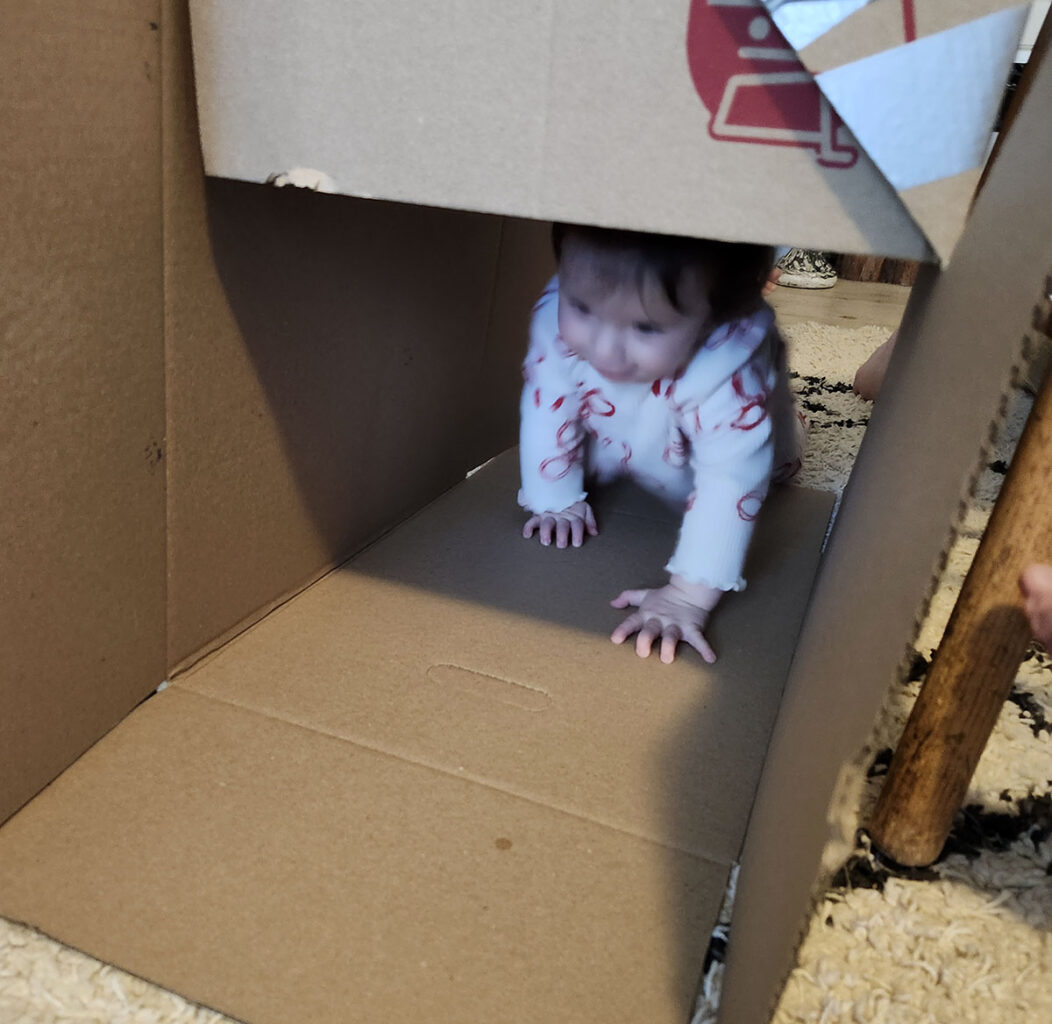 Jan 8, 2024–During my first round of raising offspring, I had a brainstorm for creating an innovative building system. Recognizing the cliché that every kid had more fun playing with the box \ than the toy that came inside it, I sketched out ideas on how to connect generic cardboard boxes so they could be configured into tunnels, forts, clubhouses, and other diversions suitable for living rooms.
Jan 8, 2024–During my first round of raising offspring, I had a brainstorm for creating an innovative building system. Recognizing the cliché that every kid had more fun playing with the box \ than the toy that came inside it, I sketched out ideas on how to connect generic cardboard boxes so they could be configured into tunnels, forts, clubhouses, and other diversions suitable for living rooms.
It was surprisingly difficult to come up with a system that was portable, endlessly configurable, absurdly simple, easy to manufacture, and cheap. So I did what most entrepreneurs do, I gave up.
Of course now readers are yelling that several companies have already developed such a system, as I am reminded every time their ads pop up in my timeline.
The reason I’m writing about this is that the other day our three grands were underfoot and in search of a suitable cardboard box to craft a tunnel. Since we hadn’t purchased a water heater or refrigerator in the past three years, we embarrassingly did not have a single suitable box.
This could not stand. For while we ran a retail store for five years, we were awash in boxes, and in fact struggled to find a way to dispose of them efficiently. Our kids grew used to stacking and cutting up an endless supply of corrugated board.
So I put on my teacher cap and started scrounging. Before long I found the perfect solution.
Moving companies and box stores all sold cardboard boxes, in four sizes, conveniently foldable, and for around two bucks a piece.
I got them home and laid them out on the floor just as the guinea pigs… er… grands walked in. Their reaction took me back to when we raised stock show goats. We had the idea of stacking tree trunks and limbs for them to climb on for exercise. We dumped a load of wood in the goat pen and before we could even begin to stack it the four-legged kids were scrambling all over the pile, leaping from log to log and butting heads. They understood the concept before we did. Same with the human kids. By the time I’d found the edge on the duct tape roll, they had unfolded and lined up the boxes to create a cardboard maze between the broken-down couch and the broken TV.
What is this affinity for the cardboard box?
I have no idea, but that never stops me from throwing out half-baked theories. To builders, the box is the basic shape of construction. From Legos to cinder blocks to Minecraft, everything starts with a block. The cardboard box is the evolutionary peak of the genre. Square, with six sides and eight corners, foldable, light enough to lift, sturdy enough to stand on. You can form it into endless configurations, then use it to hold toys or store winter clothes, then, when it has outlived its integrity, it is off to the recycling plant, from whence it will emerge as part of a brand-new box. Reincarnation for the Jainist crowd. For Christians, it is eminently burnable: ashes to ashes.
So it is–with apologies to Emma Lazarus–that we sing the praises of the corrugated cube:
“Keep your fancy brands, your storied toys!
Give me your tired, your worn,
Your bundled boxes yearning to break free,
The wretched refuse of your teeming shop.
Send these, the empty, the tempest-torn to me,
And our kids will turn them into amazing mazes, rocket ships, and forts.”